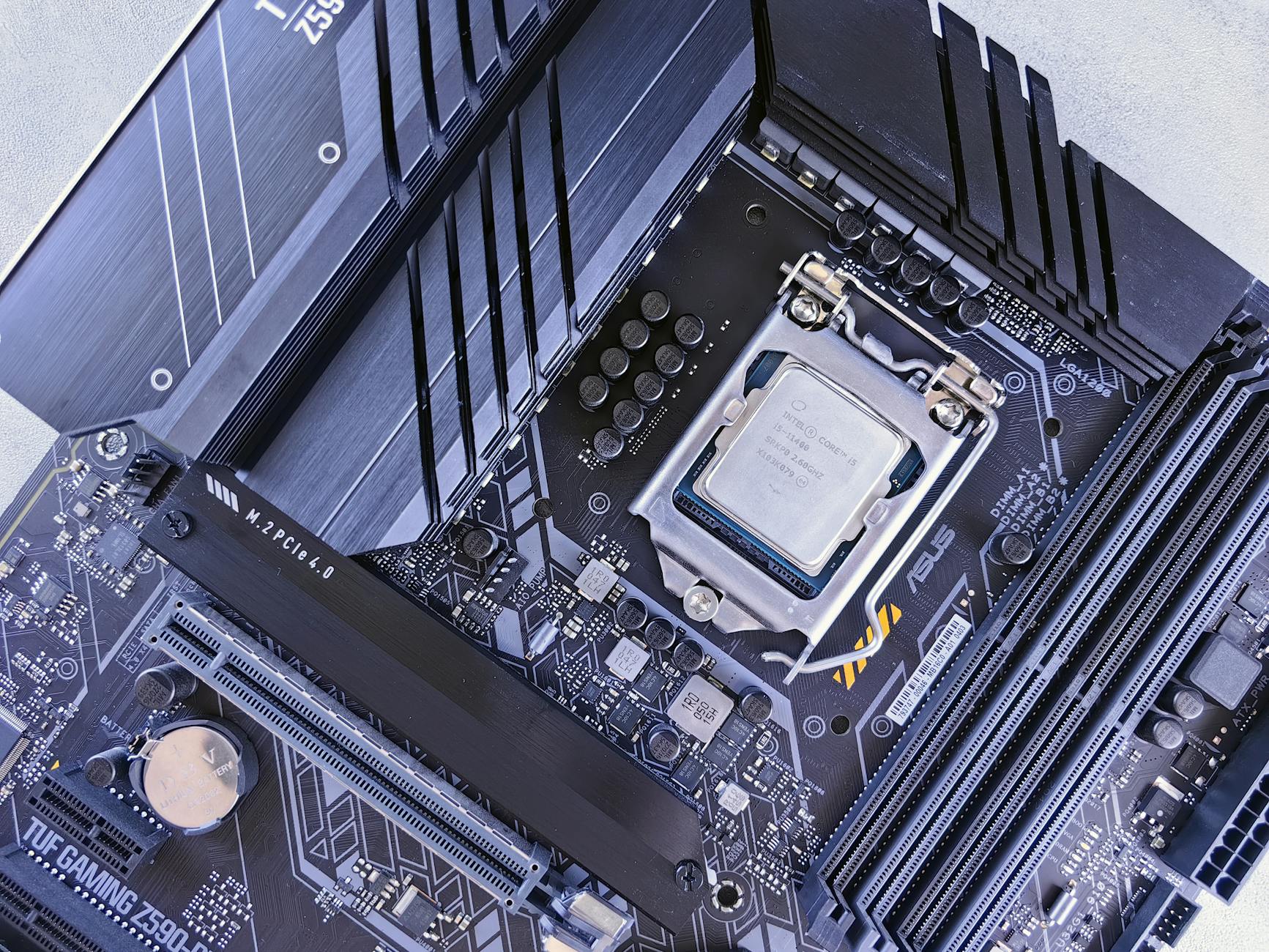Unlocking Performance: The Outlook on Next-Generation Graphics Cards
Current Top Graphics Cards
We’re hanging out in the wild world of graphics cards, meeting the top dogs of the moment: Nvidia’s RTX 40-series, AMD’s Radeon RX 7000-series, and Intel’s Arc GPUs. Each one brings its own kind of magic to the table, fitting the bill for a variety of tastes and needs.
Nvidia RTX 40-series Overview
Alright, let’s chat about Nvidia’s shiny new toy—the RTX 40-series. This one’s got some serious tech swagger. Leading the pack is the Geforce RTX 4090, boasting a beefy 24GB GDDR6X VRAM, lightning-fast core speeds, and Nvidia’s 4th generation Tensor cores that make ray tracing one heck of an experience.
| Model | VRAM (GB) | Core Clock Speed (MHz) | Tensor Cores | Ray Tracing |
|---|---|---|---|---|
| RTX 4090 | 24 | 2235 | 4th Gen | Yes |
| RTX 4080 | 16 | 2205 | 4th Gen | Yes |
| RTX 4070 Ti | 12 | 2100 | 3rd Gen | Yes |
AMD Radeon RX 7000-series Performance
Now, let’s give a nod to AMD’s Radeon RX 7000-series. These cards have cranked up the game, especially in ray tracing and number-crunching power. The RX 7900 XT strikes a sweet spot between muscle and features, and the best part? They’re now selling for less than their debut prices, which means more bang for your buck.
| Model | VRAM (GB) | Base Clock Speed (MHz) | Boost Clock Speed (MHz) | Ray Tracing |
|---|---|---|---|---|
| RX 7900 XT | 20 | 1500 | 2500 | Yes |
| RX 7800 XT | 16 | 1400 | 2400 | Yes |
| RX 7700 XT | 12 | 1300 | 2300 | Yes |
Intel’s Arc GPUs Comparison
Last but definitely not least, Intel’s stepping up with its Arc series, finally filling a price-performance void left by its rivals. Their latest, the Arc A580, adds more flavors to the mix, but the Arc A750 is usually where we’d throw our money for a good deal on power.
| Model | VRAM (GB) | Base Clock Speed (MHz) | Boost Clock Speed (MHz) | Price ($) |
|---|---|---|---|---|
| Arc A750 | 8 | 2050 | 2500 | 299 |
| Arc A580 | 8 | 1800 | 2200 | 249 |
| Arc A370M | 6 | 1550 | 2000 | 199 |
For a closer peek into the swirling GPU trends and newest graphics innovations, dive into our detailed breakdown. This will clue you into how these top cards stack up today and what you can look forward to in terms of power and perks.
Rising Trends in Graphics Cards
Hold onto your hats, folks! The buzzing bees of the graphics card scene are at it again, bringing forward shiny new trends and mind-blowing innovations. Excitement is off the charts as we peek into the GPU future. Let’s get into the chatter about what these next-gen graphics cards promise, the shiny releases coming our way in 2025, and how artificial intelligence (you heard right) is muscling in on the GPU turf.
Next-generation Graphics Cards Expectations
Buckle up, because the next-gen GPUs are causing quite a ruckus among gamers and tech enthusiasts alike. Get ready for Nvidia’s RTX 50 series, AMD’s RDNA 4, and Intel’s Arc Battlemage—these are sending enthusiasts into a frenzy. We’re talking serious boosts in performance—leave the oldies in the dust.
Take the Nvidia RTX 50 series, for instance. We’re looking at an impressive leap, around 30% better than the already muscle-bound RTX 40 series, which itself left the RTX 30 series eating its dust (TechSpot). These performance hikes are music to the ears of gamers and pros who live and breathe high-stakes, high-speed action on-screen.
Anticipated Releases in 2025
Let’s throw a spotlight on 2025, shall we? It’s shaping up to be a year to remember in the graphics card universe. Here’s the big stuff:
| Company | GPU Series | Expected Release Date |
|---|---|---|
| Nvidia | RTX 50 Series | Late 2024 – Early 2025 |
| AMD | RDNA 4 | Late 2024 – Early 2025 |
| Intel | Arc Battlemage | Early 2025 |
These long-awaited arrivals are set to stir the pot, with competition forcing everyone to up their game. Get ready for buttery-smooth gameplay, killer frame rates, and ray tracing that’ll knock your socks off. Curious about juicy details on upcoming graphics wizardry? Swing by and check out our article for more.
Impact of Artificial Intelligence on GPU Development
AI keeps popping up where you least expect it, and the world of graphics cards is no exception. Nvidia has been a bit of a trailblazer here, with snazzy features like Deep Learning Super Sampling (DLSS) that use AI magic to make your gaming visuals smoother and finer than ever before.
AI isn’t just a passing trend; it’s shaking up the GPU playground. Funky forecasts predict AI could add nearly $17 trillion to the global economy by 2033 (NVIDIA). These clever tweaks mean GPUs are getting more efficient, smarter, and feature-packed, making every pixel matter.
For an even deeper dive into AI’s hand in the GPU world, check out our article on the future of GPU tech.
So there you have it—the graphics card skyline is bright with promise. We’re on the brink of epic performance leaps, hot new releases, and AI weaving its spell over GPUs like never before. Keep your eyes peeled for all the updates and nuggets of wisdom on the latest video card innovations.
User Preferences and Expectations
Alright, let’s break down what makes the new wave of graphics cards tick. We’re going to chat about how often folks swap out these bad boys, what they expect in terms of performance, and how companies keep folks coming back for more. Buckle up because it’s a ride full of benchmarks and dollar signs.
Upgrade Frequency and Performance Expectations
Performance is king! At least, that’s what most folks say when thinking about swapping out their videocards. We’ve peeked into some insights from TechSpot, and here’s the scoop: people who upgrade every time something shiny and new comes out are hoping for a cool 30% performance boost. Skip a generation? That hope jumps to 50%. And for the patient folks waiting it out for three generations, they’re expecting performance to double! That’s doubling down for ya!
| How Often You Upgrade | What You’re Hoping For |
|---|---|
| Every Release | 30% Better |
| Every Other Release | 50% Better |
| Every Three Releases | 100% Better |
Big names like Nvidia, AMD, and Intel have their work cut out for them to keep up with these sky-high standards. Miss the mark, and they might just face the wrath of social media critiques and waning interests. Yikes!
Performance per Dollar Evaluations by Price Range
Now, let’s talk about the bang for your buck because nobody likes feeling shortchanged, especially in the GPU game. This metric is like the Hogwarts Sorting Hat for your wallet, telling you where you belong within price brackets.
In the $200-$250 range, things have been kinda meh. The GTX 1060 and GTX 1660 gave a little somethin’ somethin’, but newbies like the RTX 3050? Let’s say it left a few folks scratching their heads.
| Price Range | Models You Might Know | How Much Better? |
|---|---|---|
| $200-$250 | GTX 1060, GTX 1660, RTX 3050 | 20% (GTX 1660)**, Meh (RTX 3050) |
Under the $200 umbrella, Nvidia sticks to the script. Sure, cards like GTX 1650 and RTX 3050 6GB gave a fresh breath to older systems, but newer setup folks weren’t exactly buzzing (TechSpot).
Now for the spenders out there—$350-$500—this range has seen some legit leaps. Look at the RTX 3060 Ti; this card gave an 80% boost over the old gang. But then the RTX 4060 Ti showed up and didn’t quite hit the same notes (TechSpot).
| Price Range | Models You Might Know | How Much Better? |
|---|---|---|
| $350-$500 | GTX 1070, RTX 2060, RTX 3060 Ti, RTX 4060 Ti | 80% (RTX 3060 Ti)**, Not So Much (RTX 4060 Ti) |
Meeting Customer Demands for Performance Gain
Look, keeping up with what folks want isn’t just about power; it’s about value, too. As tech jumps forward at breakneck speed, people are itching for cards that make games look stunning and let AI programs fly, all without breaking the bank.
Manufacturers have to dance this tricky two-step between performance and cost, all while jazzing up each new release with the latest tech. Offering the moon at an earthly price isn’t just smart—it’s essential. Clear talking and promises of what these cards can really do can make or break expectations.
Wanna go even deeper into what’s cooking for the future of GPUs? Check out our article on latest video card innovations.













